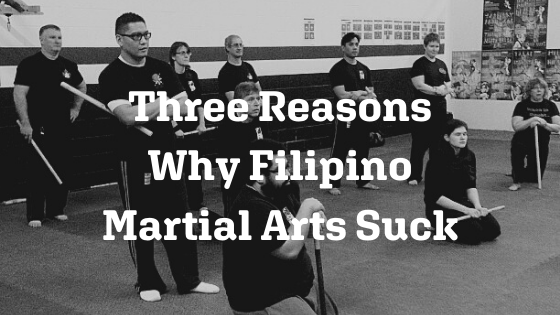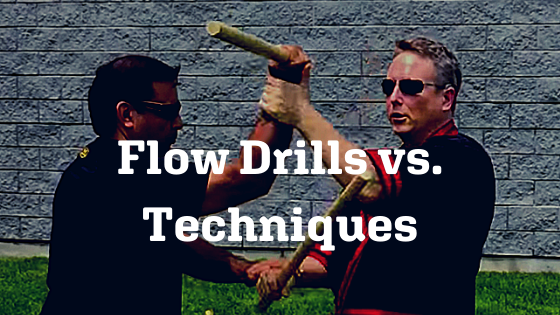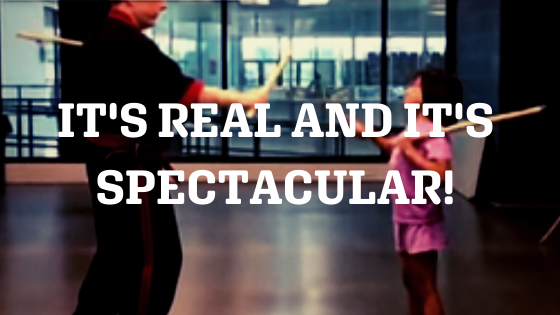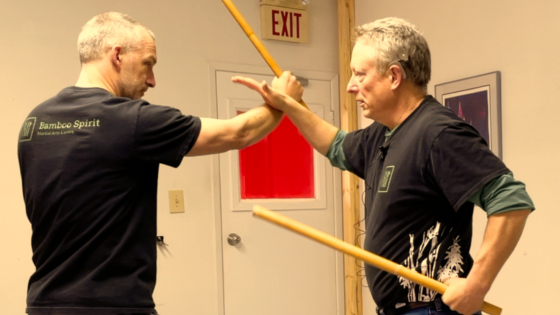Three Reasons Why Filipino Martial Arts Suck
Over the years, I’ve heard several reasons calling into question the effectiveness of Filipino Martial Arts. Not surprisingly, the opinions often come from those who have not trained in Filipino Martial Arts and, consequently, are uninformed.
Those uninformed about Filipino Martial Arts often say the following:
(1) “All they do is twirl their canes.”
(2) “You’re not always going to have your cane with you. What happens when a fight breaks out?”
(3) “Your empty hands suck.”
Let’s take each of them in turn.
(1) “All they do is twirl their canes.”
Professor Remy A. Presas, circa 1975.
I once heard the above quote from a martial arts friend of mine. “They’re good at twirling, and that’s about it.” He did not know that I practiced and taught Modern Arnis. In addition, I have trained in other FMAs as well. Upon hearing this, I said, “Oh, man, he has no idea.”
He was so confident in his opinion that I decided I wasn’t wasting my energy trying to change his mind. His opinion implied that Filipino Martial Arts were useless.
Just take their sticks away, and they have nothing.
Right. He didn’t know any better.
Type in “machete attacks” on YouTube. There was a machete attack in Oshawa just a few weeks ago, right on the corner of Taunton and Harmony, just minutes from my house!
Below is a video of a machete attack in Paterson, New Jersey. See how many times the attacker attacks with angle 12?
If you are not able to view this video, click here.
Yes, most FMA systems include twirling as part of their solo training and techniques. For example, the “double zero” strike, while a cool-looking move, is a deadly technique. Go back to the video of Professor Presas, and you’ll see that he executes the double zero several times.
Naturally, those who focus on twirling overlook what training in FMA offers.
One of the greatest values in learning Filipino Martial Arts is learning the angles of attack and the corresponding defence against each angle. Many FMA systems practice this over and over until movement becomes instinctive.
Looking at the machete video, many FMA practitioners would instinctively identify the attack as a #12 angle attack and react accordingly. There is tremendous value in training against angles of attack.
Does this guarantee success? Of course, there is no guarantee regarding martial arts and self-defence. However, training in FMAs gives the student a better chance, provided he/she has a good instructor and has trained diligently.
As one can see, Filipino Martial Arts are much more than just twirling.
(2) “You’re not always going to have your cane with you. What happens when a fight breaks out?”
Well duh.
Of course, you’ll not carry your rattan cane or bolo in public.
I often tell potential students that they will likely not carry rattan canes or bolos onto the Go Train from Oshawa to downtown Toronto. As a result, that often gets a chuckle or two. Then I explain the practicality of FMAs to them.
I tell them that those who train in Filipino Martial Arts are adept at utilizing weapons of opportunity and adapting accordingly.
For example, I can easily use a tote umbrella or a rolled-up newspaper or magazine should the need arise. Additionally, a knife or a travel wrench (courtesy of Datu Kelly Worden) can also come into play.
Through training in FMAs, you should be adept at using weapons of opportunity and defend accordingly.
Then there are the empty hand translations of stick movement. It’s somewhat controversial among some who do not believe in the empty-hand translations of FMA. I think that it’s pretty self-evident that FMA techniques translate readily to empty hands. For example, multiple empty-hand translations of the sinawali movements can serve as effective self-defence techniques.
If you are not able to view this video, click here.
Professor was quite adept at translating the stick movements to empty hand movements and insisted that we learn how to translate the stick into empty hand self-defence. This philosophy was central to the Professor’s beloved art of Modern Arnis.
(3) “Your empty hands suck.”
Ahem.
Training with swords and sticks help improve your reaction time tremendously. Being able to move defensively against weapons moving at high speed and countering immeasurably improves your reaction speed.
In addition, training with weighted objects such as sticks or swords improves your hand speed immensely.
Paul Vunak was interviewed by Black Belt Magazine in April 2008 on the topic of “Defanging the Snake.” This article was done in an interview format and one section piqued my interest:
BB: Why should martial artists in the 21st century incorporate stick fighting into their training ?
PV: To answer that properly, I have to go back to Bruce Lee and Dan Inosanto in the 1960’s. Bruce was obviously an amazing person, an amazing martial artist, and an amazing athlete. For many years, he was the only person at that level Dan had ever seen. After meeting Bruce, Dan was introduced to some Filipino masters by Ed Parker. He noticed that these masters had the same attributes as Bruce: similar speed, similar sensitivity, similar body mechanics. Dan had been probably in 20 martial arts before, he’d never seen anyone move like Bruce and these guys were in their 60s. Those masters were able to move that way because of the weapons. When you move with weapons in your hand, it expedites the development of your natural attributes. Whether you’re talking about speed, power, coordination, timing, spatial relationships or footwork, you can quadruple it by working with weapons.
BB: How does weapons training increase your speed?
PV: When you swing a stick, the tip of it moves about 150 miles per hour. No punch moves that fast. So when you’re used to seeing a stick swing that fast, punches seem like they are coming at you in slow motion. There are so many different angles and so many different weapons that when you make the transition to empty hand, it’s really easy.
(Italics added)
The late Professor Remy A. Presas had phenomenal hand speed. Ditto for someone like Master of Tapi Tapi Chuck Gauss, my teacher. This is the result of years of training with sticks. I can tell you that I have benefitted tremendously in the same way. My speed, timing, rhythm, and reaction, offensively and defensively, are all the result of training with sticks.
Bottom line, training with sticks is tremendous for developing attributes.
Setting aside the attributes developed by weapons training, some downplay the empty-hand translations of FMAs. Often they come from those who have virtually no experience in FMAs. What they do not know is that, for example, there are tons of applications for various weapons training exercises such as the single sinawali, double sinawali, heaven sinawali, reverse sinawali, gunting, punyo strikes, and much more.
It is unfortunate some of these common knocks against Filipino Martial Arts persist.
Nothing could be further from the truth and come from those who have little to no experience looking in from the outside. On the other hand, there is increasing recognition of the practicality of Filipino Martial Arts and what it has to offer in terms of self-defence.
I believe that Filipino Martial Arts are beautiful, practical, and effective and can take one on an amazing martial journey filled with possibilities.
The bottom line, Filipino Martial Arts do not suck. 🙂
I believe that every art, whether it be judo, karate, jiu jitsu, wrestling and other arts, has something to offer. There’s nothing to be gained by putting down another art, provided that it’s well-taught, functional, and has solid body mechanics.
Side note: See this updated post.
Over to you, what other criticisms of Filipino Martial Arts have you heard over the years? Let’s hear them!
Share this post:
- Click to share on Twitter (Opens in new window)
- Click to share on Facebook (Opens in new window)
- Click to share on LinkedIn (Opens in new window)
- Click to share on WhatsApp (Opens in new window)
- Click to share on Nextdoor (Opens in new window)
- Click to share on Pinterest (Opens in new window)
- Click to email a link to a friend (Opens in new window)
Brian Johns
Related Posts
3 Comments
Leave a Reply Cancel reply
Categories
- Arnis/Kali/Eskrima (113)
- Book Review (8)
- DVD Reviews (3)
- Guest Post (4)
- Inspiration (24)
- Martial Arts (99)
- My story (92)
- Safety (14)
- Tips & tricks (6)
- Uncategorized (3)
- YouTube Videos (8)






[…] few years ago, I posted “Three Reasons Why Filipino Martial Arts Suck.” I decided to update this post to include an additional reason and tweaked some sections in […]
[…] After the class ended, I asked her if she had any questions about the material we covered or my general program. During the post-class conversation, she admitted that she had never heard of Filipino Martial Arts. […]
[…] Three Reasons Why Filipino Martial Arts Suck […]